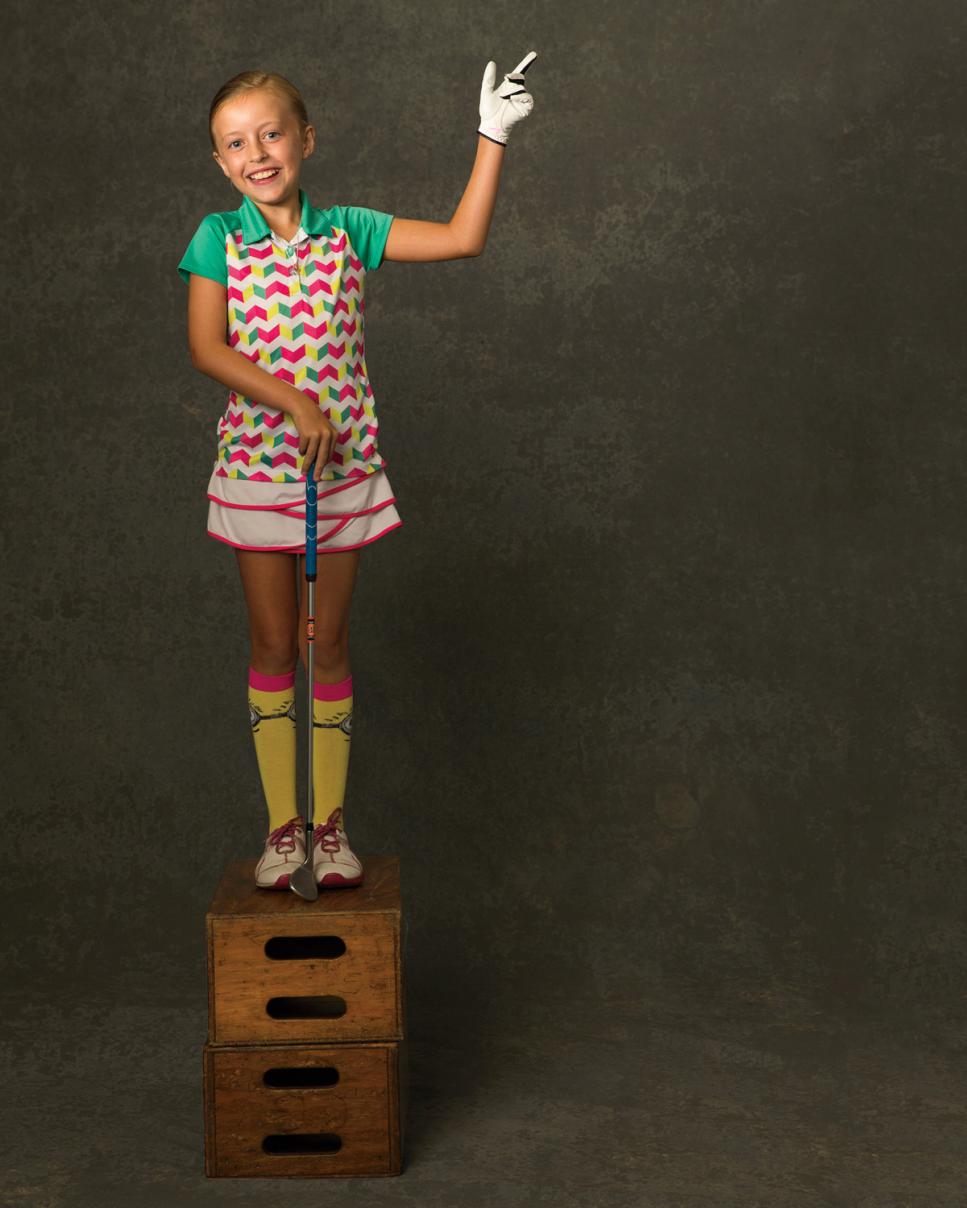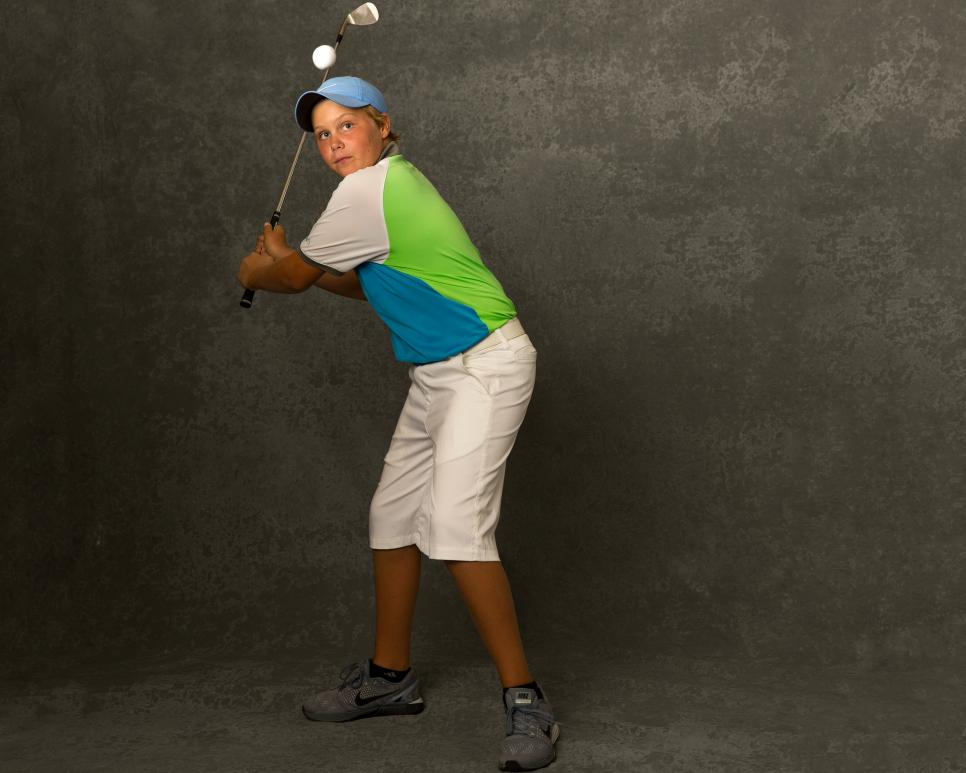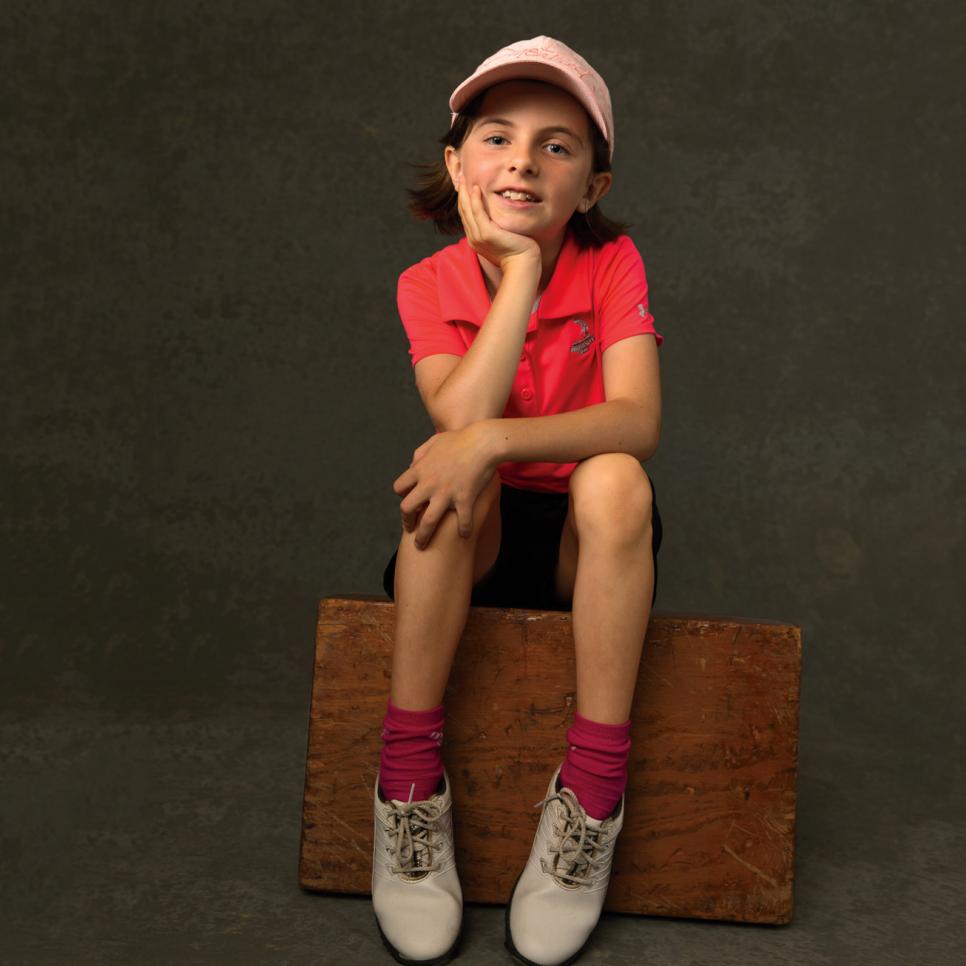Play Like A Kid Again

The first week of August in Pinehurst, there's a tradition unlike any other. This year, 1,552 players representing 52 countries came to take on 10 courses. It's the major of all junior majors: the U.S. Kids World Championship. Perhaps you saw the Netflix documentary "The Short Game," which followed a group of competitors and their parents at the 2012 tournament. The kids compete in nine- and 18-hole events, and everyone plays three rounds. Remember when you were 6? You probably weren't grinding out 27 holes of stroke play.
I'd flown from New York with the idea I'd see what made golf click for these kids. Gratification these days is as immediate as a like on Instagram, so why are all these youngsters choosing a game that takes so much time and effort? And just how did they get so good?
To be honest, I had reservations. First, I was worried about hanging out with a bunch of kids who can kick my butt on the golf course. It doesn't feel good to see a 7-year-old with a smoother action than you. Second, and apologies for sounding judgmental, but I was worried some of the parents could be, well, a little nuts.
One of these fears came true: These kids are darn good. Sihan Sandhu from Virginia shot 23 under par to win the 10-year-old boys division. That's 23 under, over three rounds, on a course set up at 5,201 yards. That's probably about the distance of the forward tees at your course.
The other fear was misplaced. Sure, many of these parents have spent a lot of money on their kids' golf careers, from travel to equipment to swing coaches.
I met one boy from Hungary who travels with his family to the south of Spain for a month during the winter to practice. One girl from India had a swing coach and a trainer. But after sitting down with 30 kids and their parents, overwhelmingly, I found the kids to be the ones driving the need to play golf.
"She wants to practice every day," David Errichetto told me about his daughter, Isabella, 9. "I try to take her to the course only a few days a week, but then she'll be out in the back yard practicing by herself. I can't stop her."

Photographed by Walter Iooss Jr. at Pinehurst Golf Resort
Carson Higginbotham, 7, from Clarksburg, W.Va., was my first interview. Fearing I'd intimidate him by sitting down with my notebook and pen, I offered to have a putting contest while we talked with my tape recorder running. I asked if he had any drills he liked. "I don't like drills," he said in his sweet Southern twang. "I just like hammering it."
From there, the interview quickly turned into Carson spending all of his energy seeing what would happen if we putted balls down a set of stairs at the Carolina Hotel. I was able to briefly break his focus to get more insight.
When it comes to putting, "I don't like thinking about break," Carson says. "If you hit it hard enough, there's never any break."
Not every kid took such a valiant attitude, but each did cite the short game as the most important part of playing.
"I love practicing short game because a lot of people who hit long balls get up to the green and they're a mess," says Madison Moman, 9, from Palm Beach Gardens, Fla. Though she doesn't always need her short game— she's had three holes-in-one.
Every kid seemed to offer some spin of the same advice: Short game is going to help you score, so you have to practice it. End of story. Though some had particular methods.
"When I go out and practice on the putting green, I just use one ball," says Thady White, 8, from Brighton, England. "You only have one ball on the course. You don't have 60 million balls on the course."

Either these kids have teachers who have synthesized the game really well for them, or there's something about a child's brain that's especially deft at filtering what's going to help during a round from what isn't. And when it comes to finding that balance of staying happy and focused, Tommy Morrissey, 5, of Palm Beach Gardens, has a practical answer.
"Put on music and dance to have more fun," Tommy says. He recommends such tunes as "Turn Down For What" by DJ Snake and Lil Jon, "My House" by Flo Rida, and anything that Bruno Mars sings. Tommy is used to giving interviews. Born with one arm, Tommy has a unique golf ability and has garnered social-media fame, magazine articles, television appearances and invitations to perform in exhibitions.
Some kids stressed the importance of being selective with playing partners. As much as you can, you want to play with people who make you feel good about your game and yourself. Few things are better than golf with siblings.

I met the cute O'Grady sisters from Meath, Ireland, Niahm, 7, and Caoimhe, 10. They were that perfect combination of nervous and giddy about the tournament.
"The best swing tip I ever got is to hold my follow-through," Caoimhe (pronounced Kwee-vah) says. "Sadly, I have to give my dad credit for that one."
For parents, having two kids in the U.S. Kids World Championship is manageable. If they don't tee off at the same time, the dad (the preferred caddie for the majority of players) can caddie for both. If the tee times happen at the same time, Mom or a coach can sub in. But there's no combination of tee times that can help the Ritters from Ohio. They have a 12-year-old daughter, Anna, and her brothers Alex, Ethan and Huston, 9-year-old triplets.
I could hear the triplets coming before I saw them—half a dozen little feet make for a mini-stampede. The four siblings sat in a semi-circle around me, the triplets' swinging legs too short to touch the ground. The boys laughed at their inside jokes while Anna sat patiently. The triplets told of being grouped together in a tournament. There was no way the three could play together quietly, so they were advised to separate while walking down each hole. One walked on the far right side of the fairway, one on the far left and one in the middle. "It's so we don't smack-talk too much," Alex says.
Their answers to my questions flowed, like one continuous sentence with three clauses. "My best swing thought is, Slow down." "Swing all the way through." "Focus on the target is the best swing tip someone gave me."
Anna likes having putting contests with her younger brothers because that's the best part of her game. They've got her outnumbered, but she can still put them in their places on the putting green. "They influence me to practice more, so I can still beat them on the golf course," Anna says.
Besides keeping one's distance from potentially raucous playing partners, I heard other experienced tournament strategies. "Don't get upset over bad shots," says Matilde Modesti, 7, from Rome. "If it doesn't work, you have to keep going. It's frustrating, but you can't get upset." Her mom helped out when we hit linguistic bumps. Matilde plays a lot of links golf. I asked her if she has to swing differently on links courses. She said, "Like this," and stood up to take a swing in the air. Ball position was back, wrists farther ahead, her hips bumped forward on the way through, arms low at the finish. A textbook knockdown shot.

My favorite question to ask each kid was what adults need to do to improve.
"Adults need to stop playing money games," Thady says. "If you're putting so much money out there, you get too into the money instead of playing the game. I do play for Skittles sometimes—and it doesn't help my game. It's better to just play normal golf. That's how you get better."
"Adults don't practice enough," Caoimhe says. "They've got other stuff to do. But they'd be better if they could practice more."
"They break down their left arm," says Isabella, who didn't stop smiling the entire interview, or probably the entire week. "And sometimes they take it back too far. But the ball goes so far, I don't know how adults do that."
"Adults try to swing way too hard. They need to slow it down and really think about what you have to do instead of going crazy and hitting it as hard as you can," says Samantha Olson from Phoenix. "They don't want to try it because they think it will go so tiny, but it actually works. It'll go farther and straighter and prettier!"
Samantha's only 11 years old but knows what she wants to do when she grows up: teach golf.
"A lot of grown-ups struggle with saying bad words on the golf course," says Aiden Dinani, 7, from Upland, Calif. "I started giving them penalties for saying bad words. That's the best way to get them to stop." Aiden wasn't so sure of me at first. He didn't want to chat; he wanted his iPad charged. His dad promised to find an outlet after Aiden agreed to talk to me.
Several kids made me feel silly about the questions I asked. Like, "Do you know how to hit a flop shot?" I thought it was a fair question because, hey, flop shots are hard.
"Of course I can hit a flop shot," Carson said. I asked him how. "Just use your lob wedge."
That's an attitude we all could, and should, adopt. Imagine how much better your game would be if you applied that mind-set to everything: Of course I can hit the fairway; I'll just use my driver.
To play like a kid again, you have to have a little of that reckless abandon that lets you hit the scary shots. You also have to walk around with a bit of a swagger, preferably in an outfit that matches. You have to be so in the moment that you're not thinking about what you're doing or what a bad shot could mean a few holes from now. You have to embody the attitude that each young player that I talked to had: Golf is the best, most fun, coolest thing you get to do all day.
And it should be treated as such.
Our games would all be better off if we followed in their confident—though tiny—footsteps.

#bestlittleswing
▶ We're doing it again. In 2003, Golf Digest set out to find the Best Little Swings in America, and one of our four winners was Alison Lee, then 8. Not to brag about our scouting abilities, but Alison is now kicking butt on the LPGA tour. Think the kid at your course has an awesome action? Post a swing video on Instagram or Twitter using the hashtag #bestlittleswing. A judging panel of Golf Digest Best
Young Teachers will select a winner to be featured in a future swing analysis. Open to boys and girls 10 and under.

